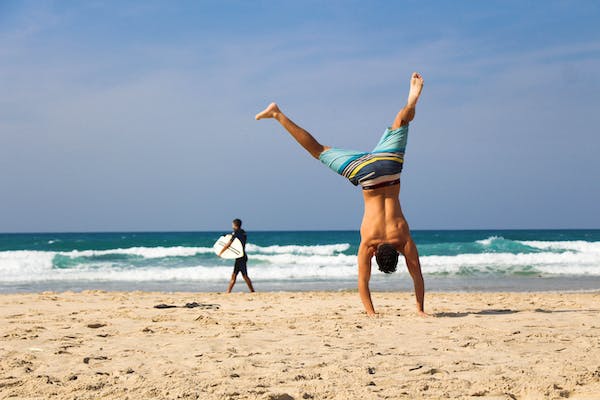.jpeg)
Six Ways to Keep Active Aging Fit Throughout Their Lives
When interacting with energetic seniors in group exercise sessions, fostering a sense of community is essential. These students want intellectual stimulation and enjoyment in the classroom. Balancing those two can be difficult for a teacher. Here are six suggestions for keeping your participants in shape forever, regardless of whether you are an experienced teacher with experience teaching active older adults or are new to that group.
Choose music wisely.
Consider your audience while choosing the music, and provide a variety. To liven up your lesson, don't be hesitant to incorporate a few recent singles or well-known line dances. Consider becoming a member of a music streaming service to access a variety of genres, playlists, and the ability to adjust BPM. Examples of such services include Power Music and Yes! Go.
Consider the volume in addition to the music you choose. The music should be loud enough for everyone to hear it while yet allowing them to hear you. The American Council on Exercise advises keeping the volume at 85 decibels or lower.
Tip: When I teach active older students, we use a method where they point to their mouths to signal the loudness of my speech and to their ears to indicate the volume of music, with a thumbs up or thumbs down to indicate whether the volume is too loud or too low.
Offer exercise variety for different levels.
The skill sets and experience of active older adults are diverse, just like those of any other group of individuals. A participant once told me they hoped instructors realised that they are not chair-bound and can still move, they simply couldn't move like they are 20 years old anymore. This participant also happened to be a former fitness instructor. Always offer different levels of an activity so everyone may feel accomplished to make class enjoyable. Connection requires positive affirmation.
Challenge physical and mental strength.
High-intensity interval training or an all-out finisher may come to mind when you think of a challenge. Reframe your thinking while dealing with active seniors to incorporate both mental and physical obstacles. For instance, give participants instructions to move lateral across the room while looking forward or to elevate their right knee and left arm. Many older folks struggle with balance, so including this type of exercise in your class can be quite beneficial. Consider including one or two hi-lo or dance combinations as well; choreography can stimulate the brain and may have a preventative impact against dementia in older persons who develop it early. Healthy living requires providing elders with a range of activities.
Be mindful of language.
There are many different generations and experiences present in the exercise setting. Always address the gathering politely by beginning your greetings with "Good afternoon, ladies and gentlemen." When giving cues, remember to take this into account. Keep cues short and succinct, and give each one some room to land. When cueing, keep the following in mind:
- What kind of activity is it?
- When ought they to undertake this action or exercise?
- How should they carry out this activity or exercise?
- Where are they supposed to feel this movement or exercise?
Build rapport with participants.
Social well-being is critical for healthy ageing and active ageing. If you ask the participants why they attend class, you can learn that they do it to socialise. Always keep in mind that for some people, your class may be the only opportunity for social interaction throughout the whole day. Learn everyone's names, ask them about their day, or find out if they have any scheduled events to accomplish this. Some students develop relationships by taking advantage of social occasions outside of class.
In the retirement community where I teach, many of the participants have spent their whole lives elsewhere. Through their classes, they have developed a social network and planned celebrations like birthday parties and quarterly lunches. In group fitness, going the additional mile is always a winning tactic, but with active seniors, it can mean even more.
Include functional movements.
Planning activities for seniors that they can use in their daily lives is essential for them to live independently. Reaching for something over your head or leaning down to tie your shoes are two common but difficult chores for some people. It's critical for instructors to recognise that participants' goals are probably centred on maintaining functional fitness throughout their lives. Squats, shoulder presses, wood chops, and knee lifts are a few movements you could want to incorporate into your regimen.






